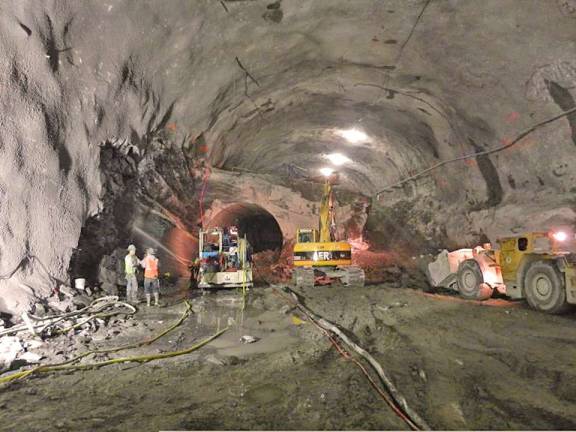Blast Rocks Second Avenue

On the otherwise calm afternoon of Tuesday, Aug. 21, what was supposed to be a controlled underground blast blew rocks and debris into the streets at East 72nd Street and Second Avenue, terrifying residents and damaging a storefront. The explosion occurred as part of the Second Avenue Subway construction, and the next day, MTA officials said they were putting a moratorium on all work at that site until the contractor could provide a new standard operating procedure and a thorough safety review had been conducted. This week, the MTA announced that construction at the site is resuming, but blasting will not continue at this time. "What happened yesterday was completely unacceptable and should not have occurred," Michael Horodniceanu, the president of MTA Capital Construction, the agency in charge of the project, said at the time. "I'm really upset and angry that whatever happened put the residents in the area in [this] situation. We are continuing our investigation into exactly what happened." Horodniceanu said that preliminary findings show that the blast, which was designed to create an elevator shaft, got out of control because the 1,800-pound, 6-foot-by-10-foot steel plate covering the tunnel above the explosives was not properly secured at its edges. "The holes that were drilled in the rock outcrop that was blasted were diagonal. Normally we will do it in a vertical fashion," he said, although the MTA has used this diagonal drilling at several other sites. "When you drill vertically, the energy that is created would go laterally. In this case, it went vertically and actually aimed directly to the deck, to the southeast corner of the 72nd Street deck. The decking lifted and allowed rock to actually spread into the street." Aside from a few broken windows at the Kolb Art Gallery, there was no structural damage to the street or nearby buildings, and no one was injured at the site, though the blast definitely rattled residents The MTA plans to take a number of steps to ensure that this won't happen again, Horodniceanu said. They will be adding protective rubber matting on top of underground blasts to further prevent the spread of debris, he said, and will also be expanding the areas from which they ban pedestrians surrounding a blast site. They are also hiring an independent safety consultant and will be employing a blasting consultant more frequently, he said. None of these measures is expected to greatly increase the cost of the project or delay its December 2016 completion date, according to Horodniceanu. "I truly would like to apologize to the residents of the area that have been exposed to numerous problems throughout the construction of this project, and I pledge to them that we'll do our best for something like this not to occur again," Horodniceanu said. Assembly Member Kellner's office said that they have received a few concerned phone calls about the incident and that he is working with the MTA to make sure that communication is better going forward. "The MTA must be accountable to the community for the actions of their contractors. To date they have failed to do so," Kellner said. "The MTA must explain in detail what new safety measures they will put in place during blasting to assure East Siders are never put in danger." The MTA has assured the community that blasting won't resume at the site before additional safety measures are implemented.